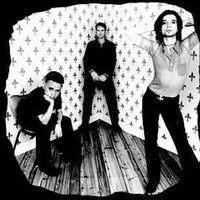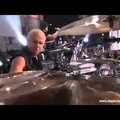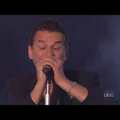Reader Ron West asked for a little bit of Depeche Mode for a song analysis, so here's "Never Let Me Down Again," a fan favorite. The 1987 release was the band's 19th UK single, and was top 10 throughout Europe. The song is from their Music For The Masses album, Depeche Mode's 6th release.
As with all song analysis, we'll look at the song itself, the arrangement, the sound and the production.
The Song
"Never Let Me Down Again" is another one of those songs with a song form that just a little different than the norm. The form looks like this:
A number of things jump out. First, there are a lot of interludes in the song, but they never feel like wasted space. Second is that the B sections can easily be classified as choruses, with a 2nd chorus at the end. However you want to describe the sections, they work well in the song.
The Arrangement
The arrangement of "Never Let Me Down Again" is pretty thick, although it doesn't seem that way on a casual listen. As with most hits, different parts enter with each new section, and every repeating section is slightly different from the previous one. The arrangement elements look like this:
* The Foundation: The drums and the bass synth.
* The Pad: The bass synth does double duty as the primary pad, although it's augmented during the chorus and outro by higher synth strings.
* The Rhythm: A trademark of Depeche Mode is some of the background synth lines that occur throughout the song that add motion. You can hear the main one easily here because it starts the song.
* The Lead: The lead and harmony vocals. The piano during the interludes.
* The Fills: Synth lines between the vocal phrase.
The Sound
The sound of the song is pretty good, but unremarkable. This happens frequently with songs built around synths or heavily effected drums like you'll find here. Even though it may be well recorded, it doesn't jump out as such.
The drums sound a little dated with the gated short room sound (especially the snare), but it does really work here. What is cool is the way the drum reverb is timed to the track. Listen to how the snare verb just about dies out before the next snare hit.
The vocal has a nice short timed delay but it's really sibilant. It's unusual for this not to be caught during recording, but you'd think they'd fix it for sure in mastering.
The Production
What makes the production of this track so good is the layering of the instruments. Everything has it's own space, and you can almost imagine each instrument sitting in front or behind the others. The arrangement is also excellent, especially how each section slightly changes and gradually builds to the big end





